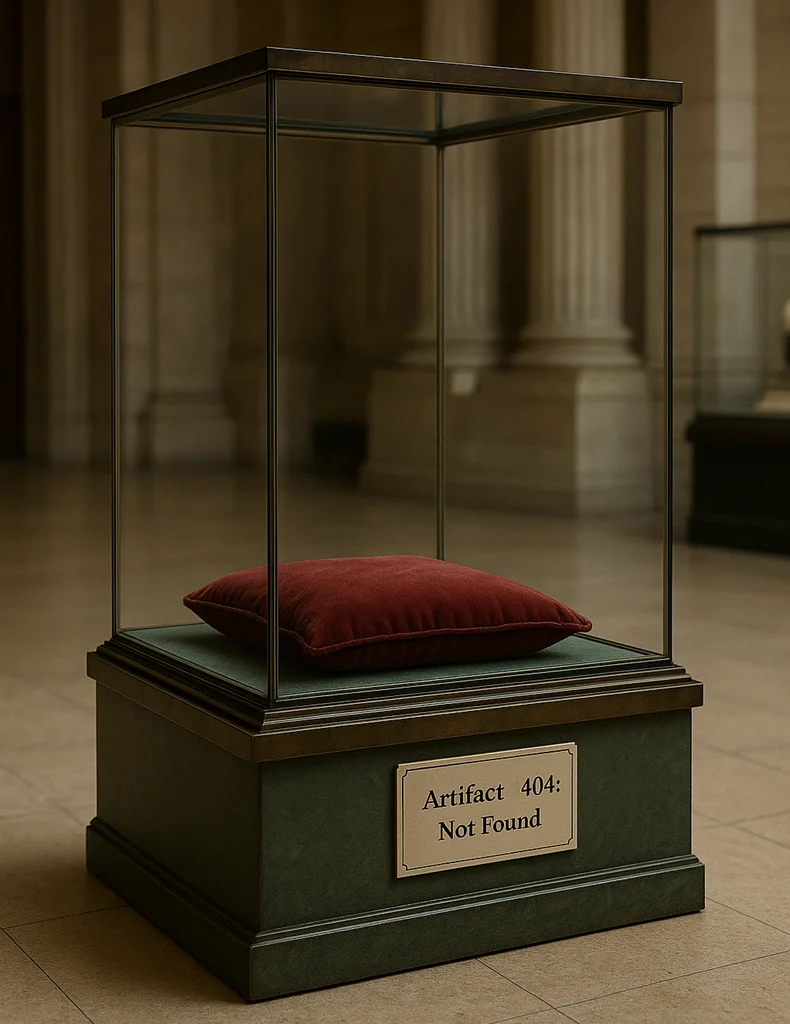404 — Possibly Stolen
This exhibit was here yesterday. Then again... so were the Crown Jewels at the Louvre.
We’ve called security, dusted for prints, and are checking the CCTV (carefully).

In the meantime, you can return to the main gallery and explore what hasn't vanished.